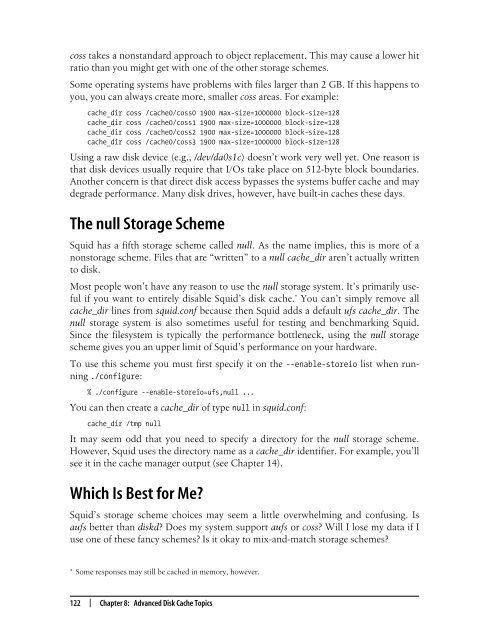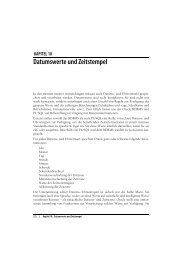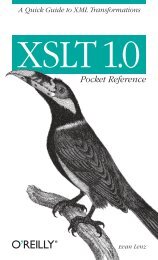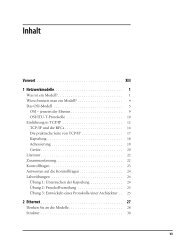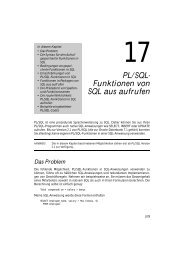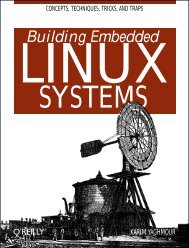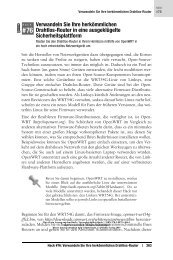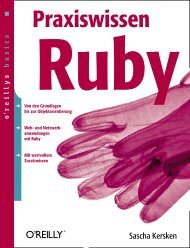Advanced Disk Cache Topics
Advanced Disk Cache Topics
Advanced Disk Cache Topics
Create successful ePaper yourself
Turn your PDF publications into a flip-book with our unique Google optimized e-Paper software.
coss takes a nonstandard approach to object replacement. This may cause a lower hit<br />
ratio than you might get with one of the other storage schemes.<br />
Some operating systems have problems with files larger than 2 GB. If this happens to<br />
you, you can always create more, smaller coss areas. For example:<br />
cache_dir coss /cache0/coss0 1900 max-size=1000000 block-size=128<br />
cache_dir coss /cache0/coss1 1900 max-size=1000000 block-size=128<br />
cache_dir coss /cache0/coss2 1900 max-size=1000000 block-size=128<br />
cache_dir coss /cache0/coss3 1900 max-size=1000000 block-size=128<br />
Using a raw disk device (e.g., /dev/da0s1c) doesn’t work very well yet. One reason is<br />
that disk devices usually require that I/Os take place on 512-byte block boundaries.<br />
Another concern is that direct disk access bypasses the systems buffer cache and may<br />
degrade performance. Many disk drives, however, have built-in caches these days.<br />
The null Storage Scheme<br />
Squid has a fifth storage scheme called null. As the name implies, this is more of a<br />
nonstorage scheme. Files that are “written” to a null cache_dir aren’t actually written<br />
to disk.<br />
Most people won’t have any reason to use the null storage system. It’s primarily useful<br />
if you want to entirely disable Squid’s disk cache. * You can’t simply remove all<br />
cache_dir lines from squid.conf because then Squid adds a default ufs cache_dir. The<br />
null storage system is also sometimes useful for testing and benchmarking Squid.<br />
Since the filesystem is typically the performance bottleneck, using the null storage<br />
scheme gives you an upper limit of Squid’s performance on your hardware.<br />
To use this scheme you must first specify it on the --enable-storeio list when running<br />
./configure:<br />
% ./configure --enable-storeio=ufs,null ...<br />
You can then create a cache_dir of type null in squid.conf:<br />
cache_dir /tmp null<br />
It may seem odd that you need to specify a directory for the null storage scheme.<br />
However, Squid uses the directory name as a cache_dir identifier. For example, you’ll<br />
see it in the cache manager output (see Chapter 14).<br />
Which Is Best for Me?<br />
Squid’s storage scheme choices may seem a little overwhelming and confusing. Is<br />
aufs better than diskd? Does my system support aufs or coss? Will I lose my data if I<br />
use one of these fancy schemes? Is it okay to mix-and-match storage schemes?<br />
* Some responses may still be cached in memory, however.<br />
122 | Chapter 8: <strong>Advanced</strong> <strong>Disk</strong> <strong>Cache</strong> <strong>Topics</strong><br />
This is the Title of the Book, eMatter Edition<br />
Copyright © 2004 O’Reilly & Associates, Inc. All rights reserved.


